21 Mentor Training Modules 5: Verbal Feedback
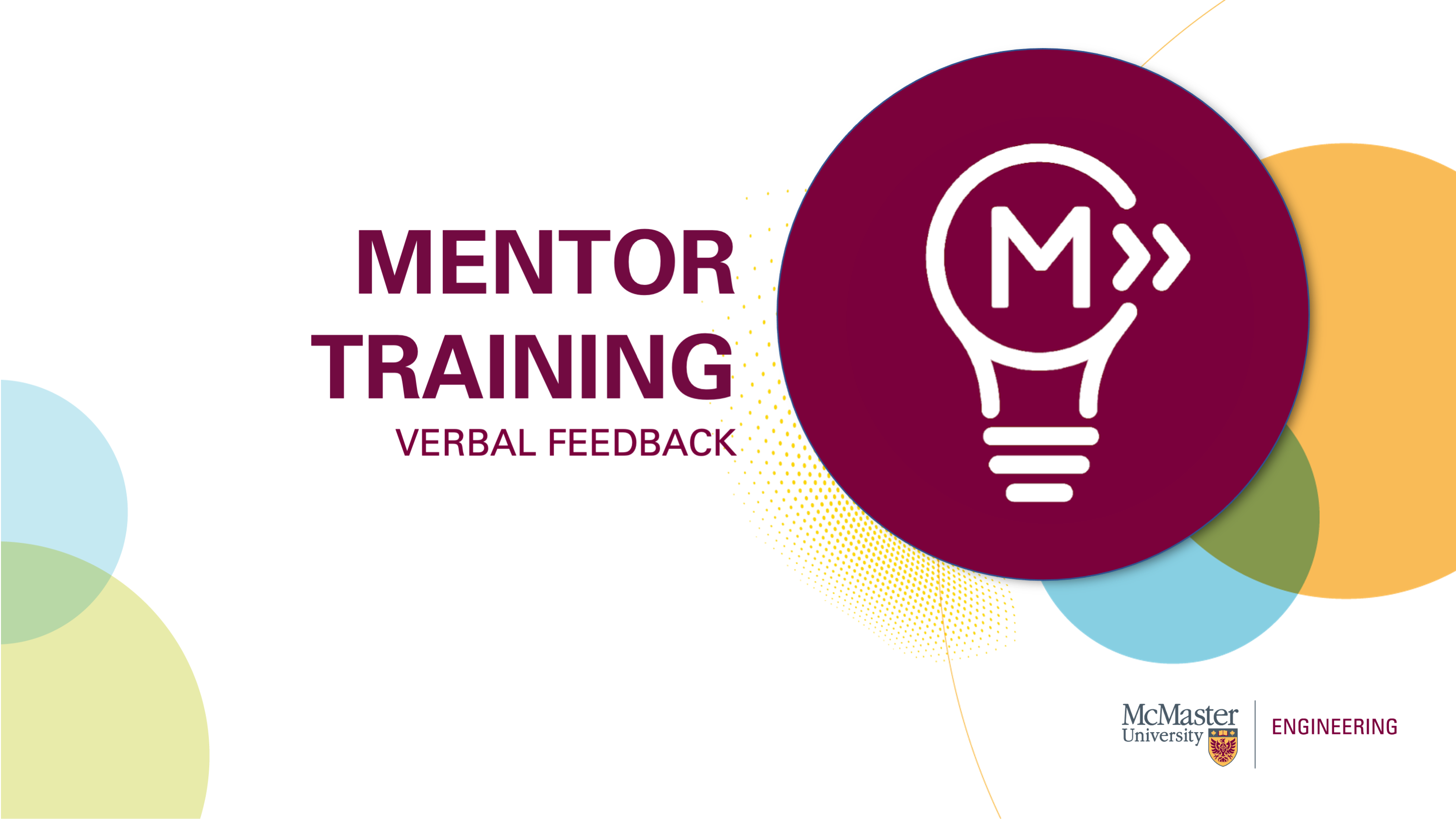
Hey everyone, welcome to the final mentor training module. This time around, we will be discussing verbal feedback.
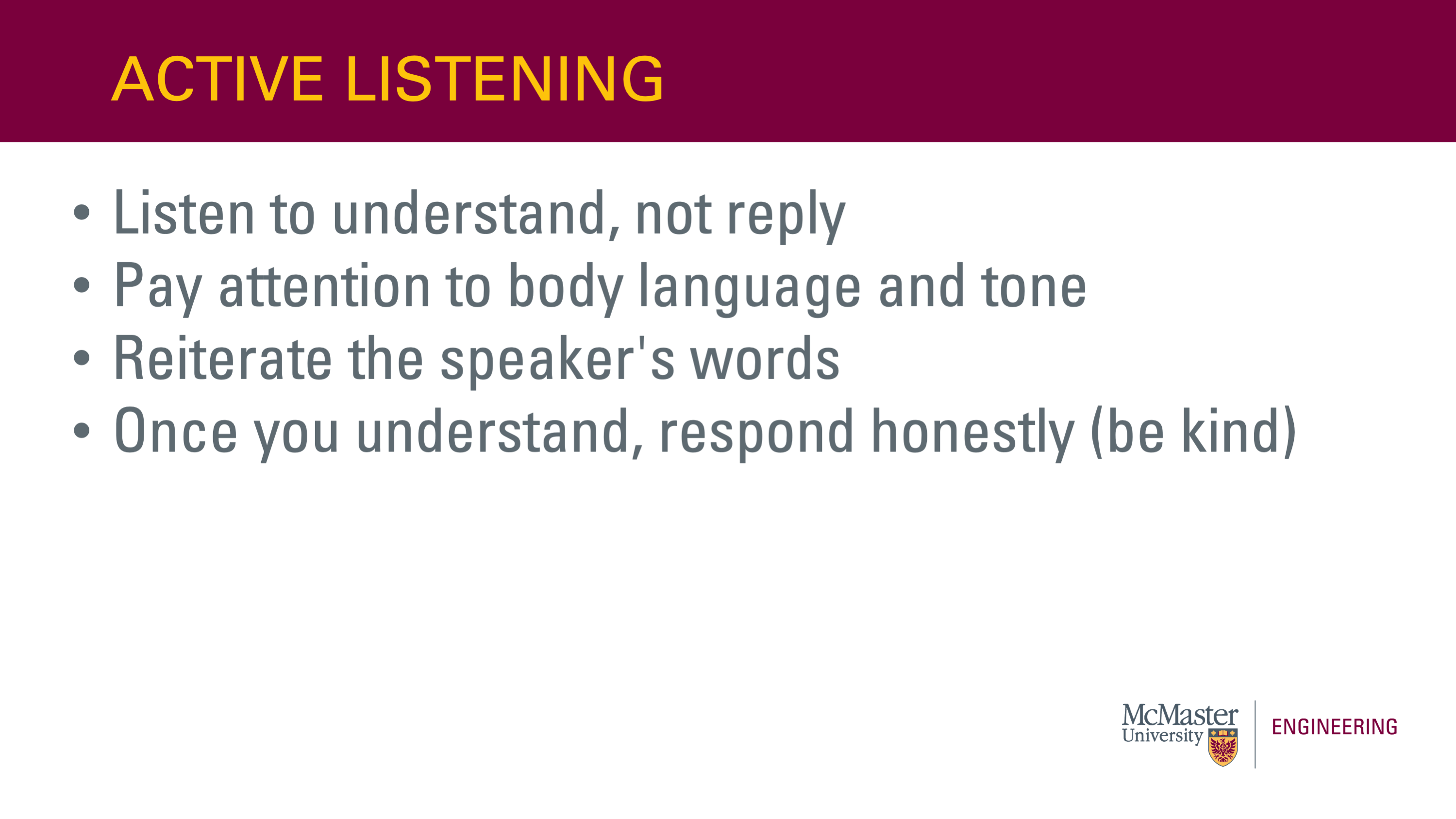 To start, we will be discussing active listening. Giving verbal feedback consists of stages, one of which is listening and understanding the individual you are giving the feedback to. First off, listen to understand, not to reply. Your reply will be the feedback once you have finished, so have some patience and take your time to understand what the individual is saying before you go about providing feedback.
To start, we will be discussing active listening. Giving verbal feedback consists of stages, one of which is listening and understanding the individual you are giving the feedback to. First off, listen to understand, not to reply. Your reply will be the feedback once you have finished, so have some patience and take your time to understand what the individual is saying before you go about providing feedback.
Next, paying attention to the body language and tone of the individuals. This also applies to online settings, whenever possible. They may feel uncomfortable, not as confident, or unsure when they are presenting their ideas so that is a good indication to put a bit more time into guiding them towards a good project.
Thirdly, to show the speaker that you understand them, try reiterating their words back to them. Not only will this show the speaker you understand, but it will solidify your understanding of their idea as well.
Finally, once you understand what they are presenting to you, respond with honesty. Being ambiguous or indirect can be confusing and might frustrate a team you are working with, so respond honestly. With that being said, be kind! There is always a kind way to communicate whatever needs to be said, so take a second and find the kinder way to proceed.
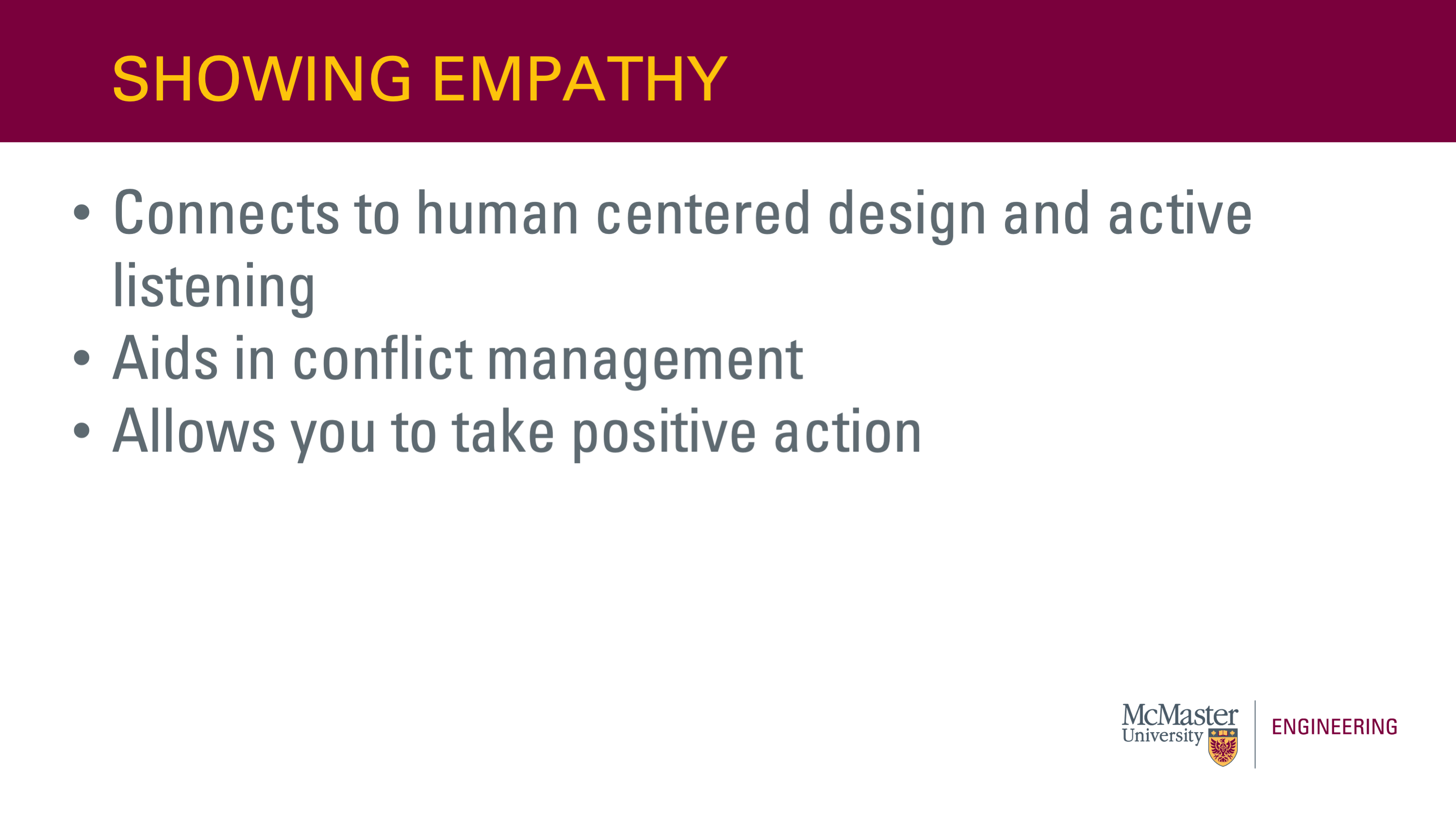
Showing empathy is extremely important when providing feedback. Having empathy will help you with conflict management. You’d be surprised how many conflicts can arise when you provide feedback. When you identify areas for growth within the project it might make participants feel defensive. Participants may turn on each other, saying “so and so was supposed to do this part but didn’t do it.” They might feel defeated, wondering if any part of their idea is worth keeping or they may fear they do not have time to come up with a new direction. Being empathetic will help you take positive action and help you provide further feedback or guidance beyond what may was initially needed.
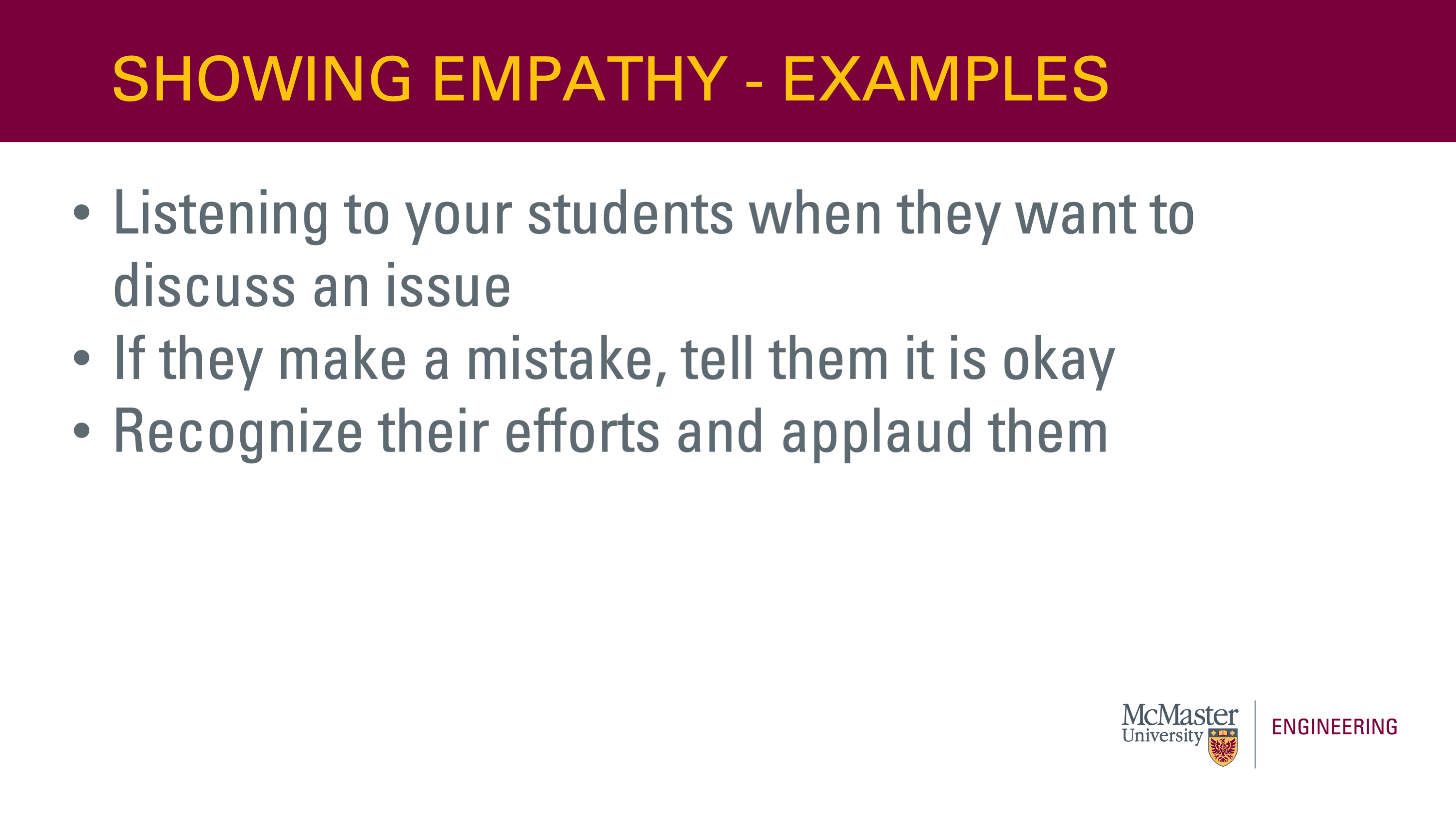
Some examples of showing empathy would be listening to your students when they want to discuss an issue. If they make a mistake, tell them that is okay. You want to encourage positive failure as it is a way to grow as a group and to learn from their mistakes. Like they say, failure is the best teacher! Next, recognize their efforts and applaud them. They are working hard between many obligations and their personal lives, so make sure you appreciate their effort. It may seem like these are obvious things to do, but when you are balancing multiple teams or dealing with your own stress, these little things can be easy to forget. Take a moment to find empathy in the moment, and it will make a difference to your teams.
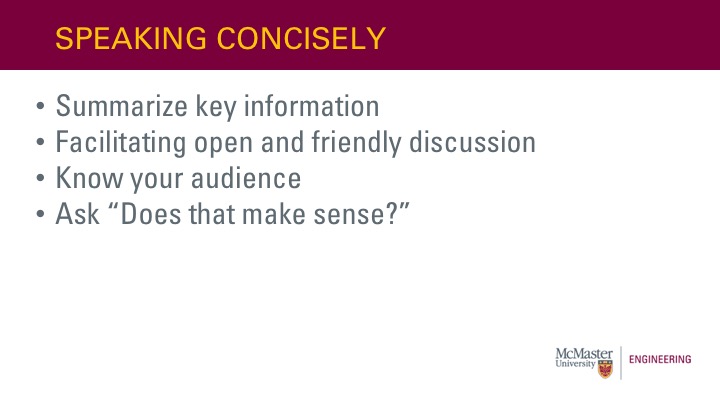
Next is speaking concisely. Do you think the students would rather listen to two minutes of your concise feedback or 10 minutes of conversation with 2 minutes of feedback sprinkled in? Well, I am talking to a screen right now but I’m assuming you chose the first option. An easy way to do that is by knowing your audience. When you know your audience, you know if you can speak fast, or to speak slow. You know who responds well to jokes and stories and who prefers facts and statistics, or when to sprinkle in both. Knowing who you speak to will let you decide what speaking concisely looks like for them. Finally, ask “Does that make sense?” before moving on to a new topic. This will help you understand if everyone is on the same page and help you move forward with the project.
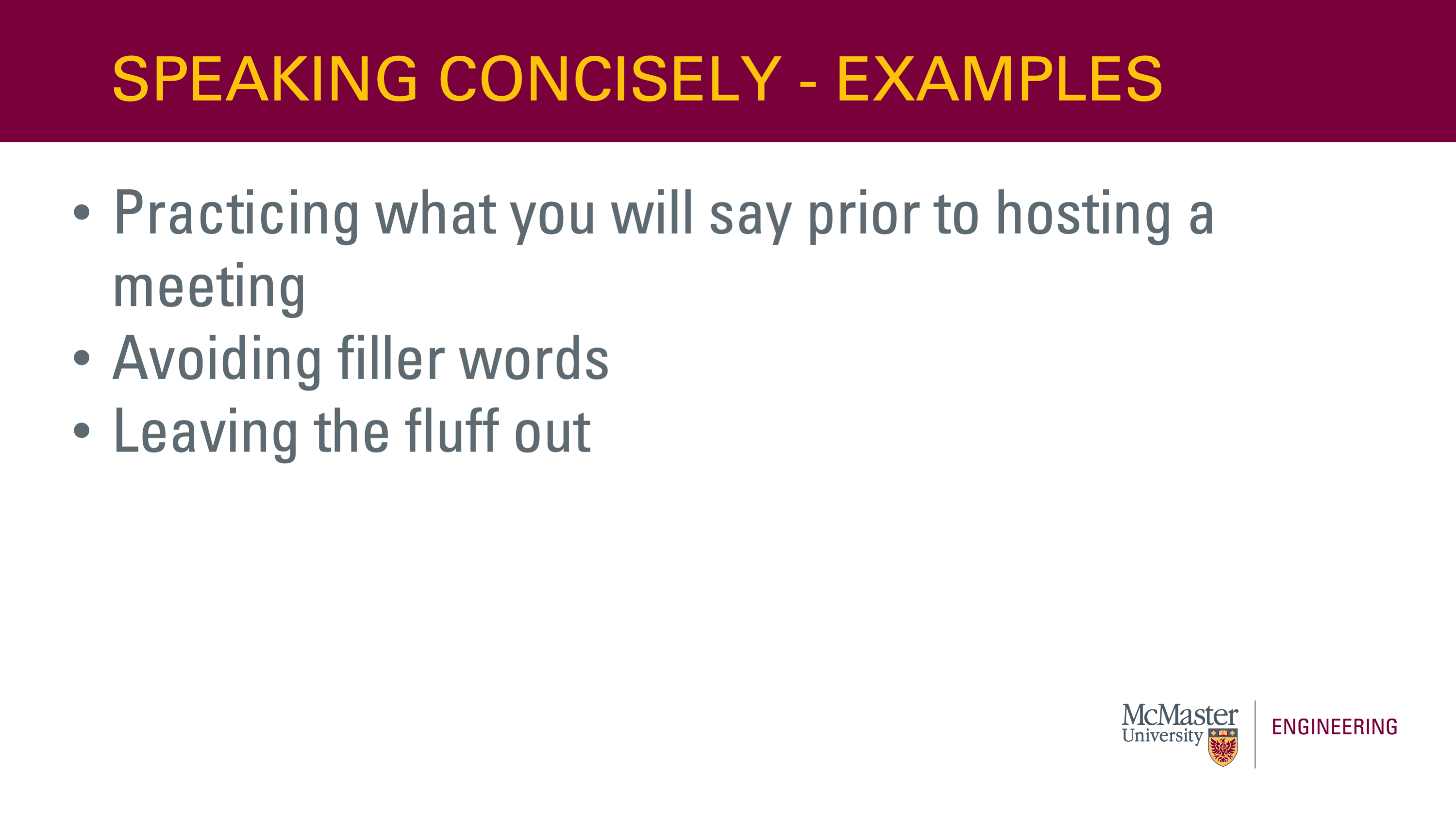
Some examples of speaking concisely would be practicing what you say prior to hosting a meeting, avoiding filler words, and leaving the fluff out. All of these are excellent practices to ensure you are successful in being concise when you speak, but they aren’t everything. Feel free to further explore some techniques on your own to be the best communicator you can be.
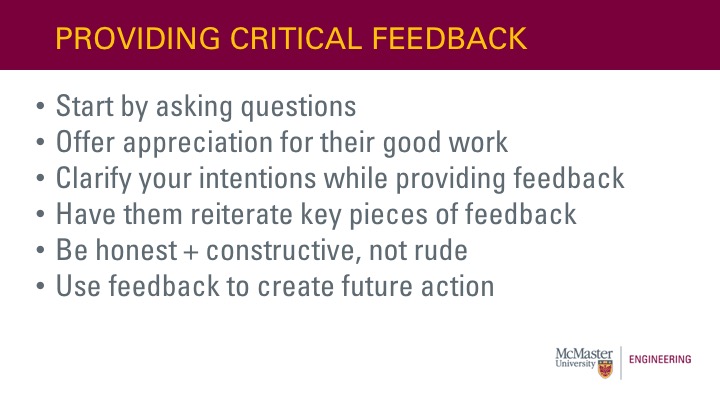
Here we will discuss some methods to ensure you provide critical feedback to your groups.
Start by asking questions. Sometimes when you provide feedback to a groups submission, you can benefit from learning more about the topic. Give the group an opportunity to elaborate on where you have confusion. It is imperative that if a group explains there idea differently to you verbally than whatever you are evaluating, you explain to them what you had understood from their deliverable. Doing so will prepare your participants to make alterations to their explanations in the future and will help to identify their assumptions in what must be explained to their audience.
Another effective mechanism for offering feedback to groups is to appreciate what they are doing well. A lot of time mentors can fall into the habit of saying, “This is great, keep up the good work!” When you provide such little information, it is actually a disservice to the group you are mentoring. The participants need to know what specifically they are doing well. Are you impressed by their communication style? Do you admire their aesthetic? Do you believe their current project is well-scoped with feasible ideas? Do you think it is creative? It is important to both acknowledge good work and provide detailed information that a team can continue to build on.
Thirdly, clarify what outcomes you’d like to see when providing feedback. Sometimes participants need to understand the bigger picture of what you are trying to say. Rather than just explaining that you think their project lacks creativity, it might be helpful to say, “You might be competing against ten or twelve other ideas for solving this problem. If you want to grab the attention of the audience, you’ll want your idea to stand out. Your current solution is effective, but similar solutions exist. It might help to engage in another brainstorming session to think outside the box. You can even use your existing idea as a jumping off point.” This type of feedback gives the team an understanding for the broader implication of your feedback and even provides them with a potential next step.
Furthermore, ask teams to repeat what they understand your feedback to mean. This was referenced above as a mechanism to listen deeply. You will be able to evaluate if your expectations are clear to the group moving forward.
As always, ensure you being honest and constructive, without being rude. There are always kind and compassionate ways to go about offering feedback. Always choose the kindest option for offering feedback, even if you need to take a moment to collect your thoughts before offering your opinion.
The final piece of advice we’d like to offer you when providing constructive feedback is to offer a group direction moving forwards. During short-duration learning experiences, time is limited. Although it is great to let a team work through feedback on their own, losing momentum can be devastating to a team working until timely conditions. Try to offer the groups a few mechanisms to move forward when you provide them with constructive feedback to help maintain high energy and enthusiasm with the group. This is especially true if you feel that you are offering difficult news to the team.
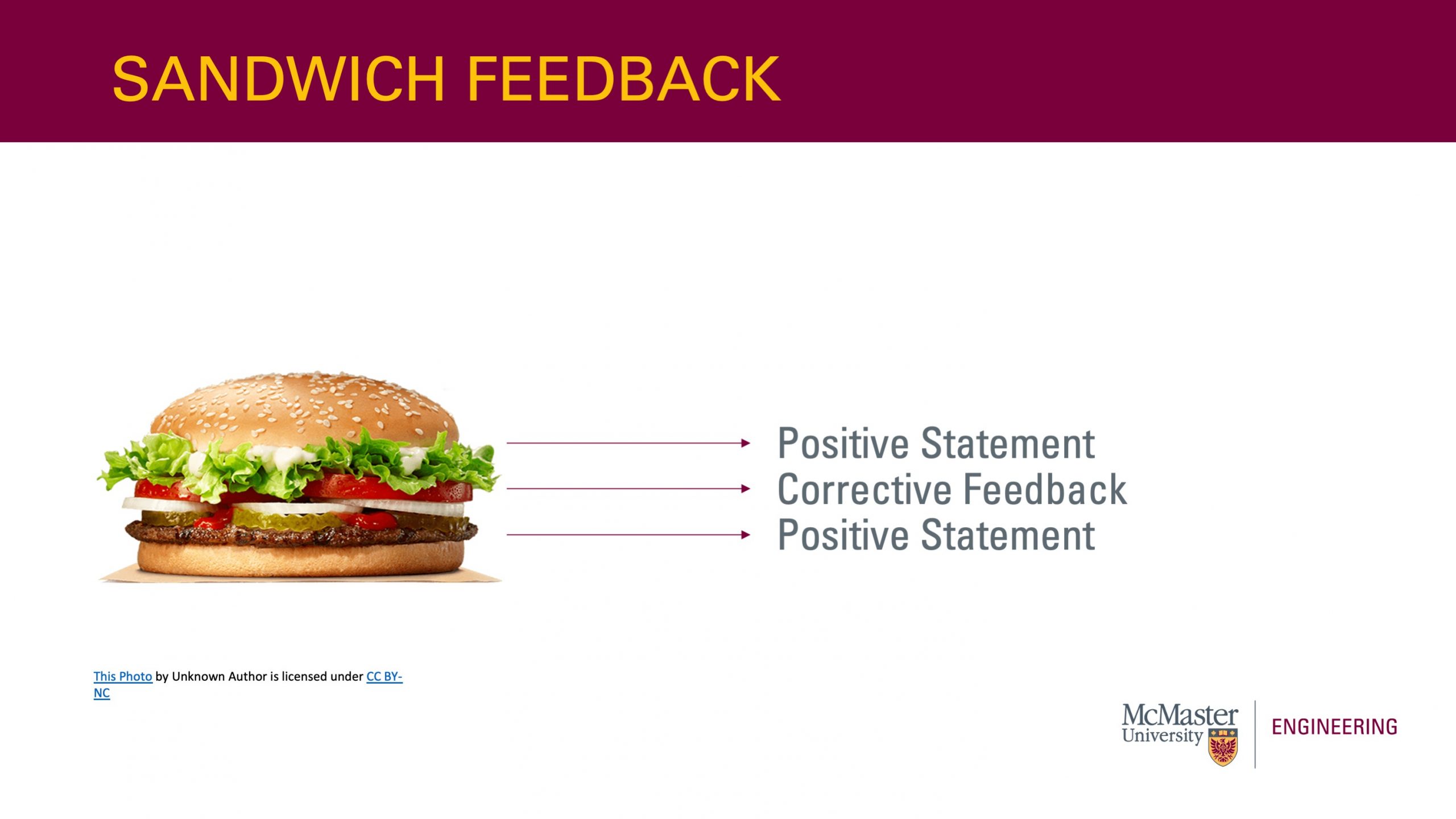
One way to deliver constructive feedback is through the burger method. Like we discussed before, start with a compliment. Then provide critical feedback, and finally finish with a compliment. They worked hard to be where they are so ensure you recognize that and lift your teams up. Just make sure that the feedback and compliments you offer the team are honest. People can tell when your comments are disingenuous, which will diminish the desired outcome of offering feedback using the burger method.
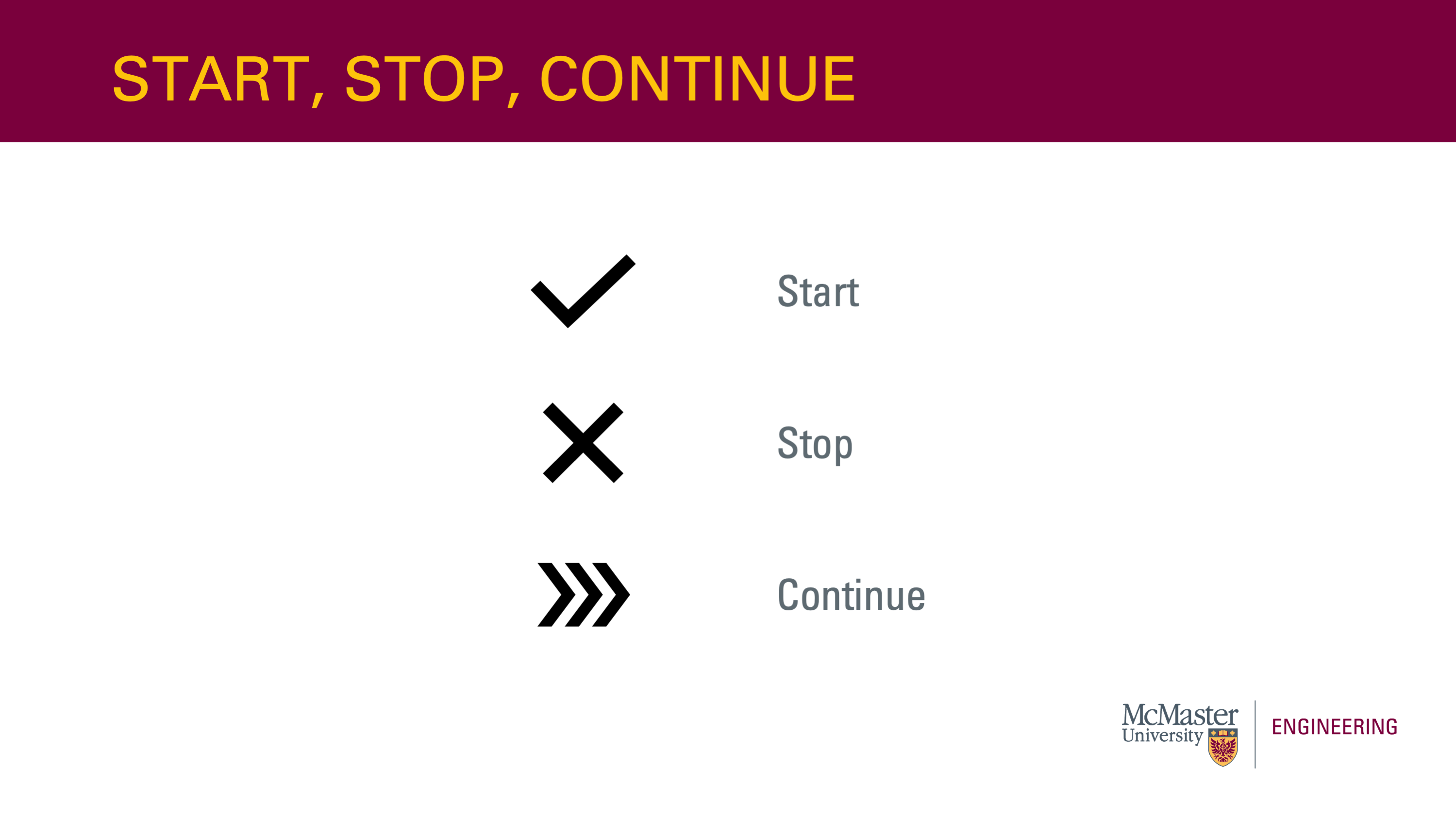
Another option for delivering feedback is using the start, stop, and continue method. You want to describe what a group can start doing to improve their project outcome, what a group is doing well and should continue to do, and to stop doing anything that you feel is getting in the way of group productivity. Typically, we recommend that unless your suggestion needs to be salient, try to rephrase any “stop” items into start. For example, instead of telling a group to “stop” being disorganized, you could recommend telling a group to “start” improving their organizational skills. Sometimes if a group is participating in an action you consider inexcusable, telling them directly to stop is necessary. As such, it is up to your judgement to decide how to lay out information using the start, stop and continue method.
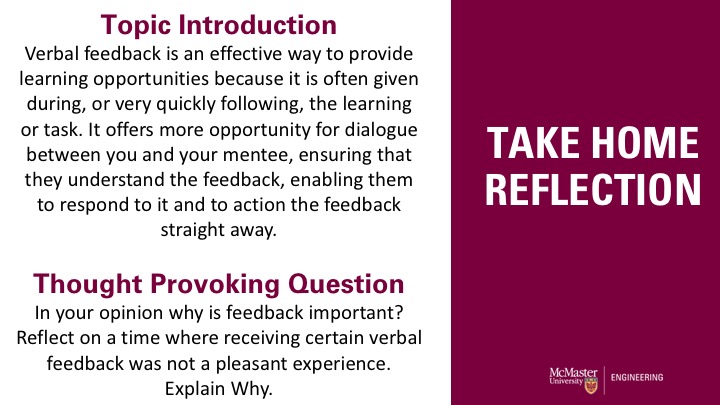
Thank you for completing the fifth and final module in the mentor training series. Take some time to reflect on your own experiences either receiving or giving feedback. What worked well? What went poorly? Drawing on your own life experiences will help you to bring empathy and consideration to the role when you are giving feedback to your teams in the future.
References
(2015) The Role of “Active Listening” in Informal Helping Conversations: Impact on Perceptions of Listener Helpfulness, Sensitivity, and Supportiveness and Discloser Emotional Improvement, Western Journal of Communication, (79)2, 151-173, DOI: 10.1080/10570314.2014.943429
Burgess, A., Roberts, C., Lane, A.S. et al. (2021). Peer review in team-based learning: influencing feedback literacy. BMC Medical Education, 21(426). https://doi.org/10.1186/s12909-021-02821-6
Guise, J. M., Geller, S., Regensteiner, J. G., Raymond, N., Nagel, J., & Building Interdisciplinary Research Careers in Women’s Health Program Leadership (2017). Team Mentoring for Interdisciplinary Team Science: Lessons From K12 Scholars and Directors. Academic medicine : journal of the Association of American Medical Colleges, 92(2), 214–221. https://doi.org/10.1097/ACM.0000000000001330
(2015) Use of the ‘Stop, Start, Continue’ method is associated with the production of constructive qualitative feedback by students in higher education, Assessment & Evaluation in Higher Education, 40:5, 755-767, DOI: 10.1080/02602938.2014.956282
Joyce, T., and and McDonagh, D. “Empathic design: Research strategies.” The Australasian medical journal vol. 6,1 (2013): 1-6. doi:10.4066/AMJ.2013.1575
Prochazka, Jakub, et al. “Sandwich Feedback: The Empirical Evidence of Its Effectiveness.” Learning and Motivation, vol. 71, 2020, p. 101649., https://doi.org/10.1016/j.lmot.2020.101649.
(2021) Who is feedback for? The influence of accountability and quality assurance agendas on the enactment of feedback processes, Assessment in Education: Principles, Policy & Practice, 28:3, 261-278, DOI: 10.1080/0969594X.2021.1926221

